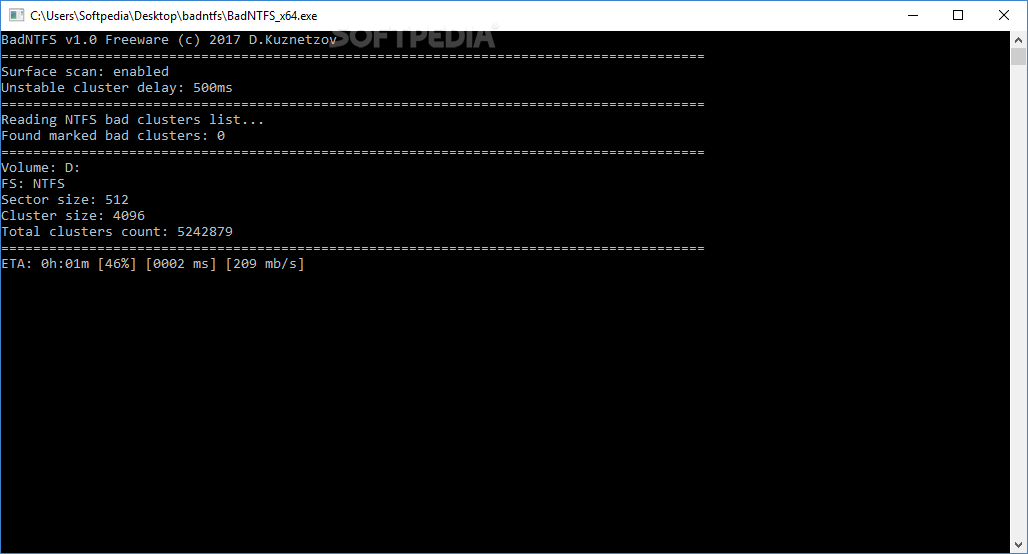
BadNTFS
1.10Identify and mark all unstable or defective clusters on a selected NTFS partition, with this lightweight command-line application
Defective or unstable clusters on NTFS partitions are difficult or impossible to detect using Windows utilities or third-party tools, so you may wish to rely on a program specifically designed to identify and log them.
BadNTFS is a small piece of software that can find and mark these clusters, even those that are ignored by Self-Healing NTFS, S.M.A.R.T. and chkdsk. It can save everything in a log file and even transfer or delete files and directories automatically.
A simple check is very easy to set up, as it is only necessary to specify which partition should be scanned. Once the job has been started, information about its progress will be displayed in a new console window.
Moreover, you can configure the utility to delete files automatically if necessary. Files and folders that have unstable clusters are transferred by default.
This utility can be very useful in the right hands, and it does come with comprehensive documentation to help first-time users.
BadNTFS is a small piece of software that can find and mark these clusters, even those that are ignored by Self-Healing NTFS, S.M.A.R.T. and chkdsk. It can save everything in a log file and even transfer or delete files and directories automatically.
Scan for bad clusters on NTFS partitions
In order to run a scan, you need to launch the program from the command console. It does not provide you with a graphical user interface, so you have to be comfortable with using Command Prompt.A simple check is very easy to set up, as it is only necessary to specify which partition should be scanned. Once the job has been started, information about its progress will be displayed in a new console window.
Use various parameters to define how actions are logged and how files are handled
Aside from specifying which volume should be checked, you can also set the delay after which a cluster is considered unstable, have the program ignore unstable clusters and use the badlog.txt file instead of scanning the surface.Moreover, you can configure the utility to delete files automatically if necessary. Files and folders that have unstable clusters are transferred by default.
Lightweight NTFS partition scanner
Overall, BadNTFS is a relatively simple piece of software that can help you deal with NTFS partitions that have unstable or defective clusters. It is not the most novice-friendly program out there, given the fact that it lacks a GUI, but it is not particularly difficult to use.This utility can be very useful in the right hands, and it does come with comprehensive documentation to help first-time users.
142 KB
Info
Update Date
Nov 04 2020
Version
1.10
License
Freeware
Created By
Dmitriy Kuznetzoff
Related software System







